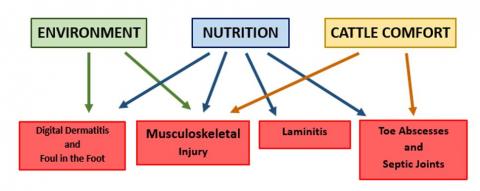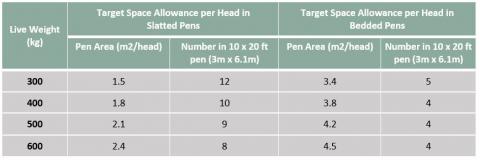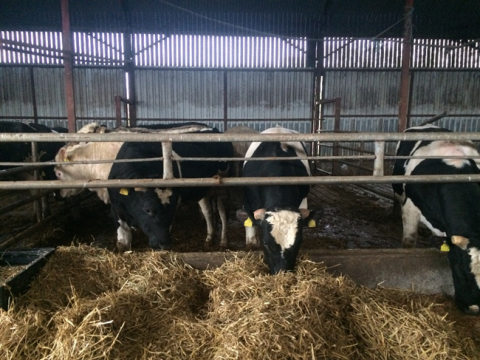By Sara Pedersen MRCVS, Farm Dynamics Ltd, Cowbridge, Vale of Glamorgan
Lameness is a painful condition for the animal and a costly one for the producer. Whilst there has been a large focus on lameness in dairy cattle, beef cattle have received relatively little attention in comparison. However, it can have big impacts on the beef herd too. Not only is lameness a serious welfare concern due to the pain associated with it, lame cattle have reduced weight gains, take longer to finish and add to the cost of production due to increased labour, feed and pen space requirements.
How big is the problem?
Due to a lack of monitoring and records it is very difficult to put a specific number on the proportion of lame beef cattle and exactly what impact this has. Aside from the financial implications, as lameness is a very visible condition there is also the potential for it to risk the reputation of the industry and consumer confidence in beef. .
A recent slaughterhouse study conducted by the University of Liverpool has provided some evidence as to the most common lesions causing lameness and how widespread they are. The foot health of over 74 limbs from prime beef animals slaughtered at around 30-months of age was assessed. They found that 1 in 5 cattle the lesions were severe enough that the animal would have been lame at the time of slaughter.
The majority of feet had evidence of bruising ranging from mild to severe and 18% of feet had evidence of white line disease. The most common lesion found was slurry heel which was found in more than 75% of feet and was severe in 25% of affected claws.
Although this study was small it gives us an insight into the potential lameness issues affecting beef cattle. The results suggest that foot abnormalities are very common in finished cattle which has welfare implications and undoubtedly impacts on the productivity and profitability of the herd through to reduced growth rates.
Why does lameness occur?
There are a number of potential causes of lameness in beef cattle but the most common are due to infections e.g. foul and digital dermatitis, or injuries. As the University of Liverpool study found, infectious lesions in the form of slurry heel and also foul in the foot were most commonly found.
The risk factors for lameness can be divided into three categories:
- Environment
- Cattle Comfort
- Nutrition
As shown in the diagram below specific causes of lameness are predisposed by risk factors within one or more of these three categories. It is an important part of the herd’s health plan to identify which of these areas is the most significant when it comes to lameness on the farm, so that they can be addressed through a robust action plan which should be produced in consultation with the farm’s vet. Periodic monitoring and reviewing of the action plan helps to ensure that targets are met and progress is made.
1. Environment
The environment in which cattle are kept is important in reducing the risk of digital dermatitis, foul and musculoskeletal injuries. It must be clean and dry and slurry must not be allowed to pool since the slurry not only harbours bacteria capable of causing lameness but is also irritating to the skin, increasing the risk of bacterial infections.
The floor must provide grip to reduce the risk of slipping and injuries, however, it must not be overly coarse otherwise it can lead to excessive wear and increase the risk of sole bruising. Damage to the hooves can be caused through holes and cracks in the floor so it must also be well maintained.
Stocking density is the single most important factor when it comes to cleanliness of cattle on slats. Space allowance is based on weight rather than breed or sex. The SRUC guidelines for cattle on both slats and bedded pens are given below.
2. Cattle Comfort
Poor cattle comfort is a risk factor for musculoskeletal injury, toe abscesses and septic joints. All handling, transport and housing facilities must be properly designed to reduce the risk of injury and bullying. Pens must not be overstocked and there must be sufficient feed barrier space for all animals in the group to feed at the same time, since pushing and sharp turns increases the forces on the feet. Placing rubber on slats or high traffic areas improves cattle comfort and reduces the risk of lameness and also joint swelling.
To avoid excessive forces on the feet due to pushing, there must be sufficient feed barrier space for all animals in the group.
3. Nutrition
Nutrition has an impact on all of the commonly seen causes of lameness in beef cattle. However, some are more indirect than direct effects. With finishing cattle the main risk is from acidosis as this has numerous effects on hoof health. Firstly acidosis results in the production of softer horn which is then more susceptible to damage such as bruising. In addition the faeces that is produced as a result is very irritant on the skin of the feet, increasing the risk of infectious causes of lameness such as digital dermatitis and foul.
To reduce the risk of acidosis the diet must be balanced and consistent since any sudden dietary changes can upset the balance of the rumen microbes. This is particularly important when introducing cattle on to a high energy diet – this must be done slowly to allow the animal to adapt, otherwise acidosis with occur. Where this is not possible it is essential that strong acid buffers are in the diet to counteract the risk.
The integrity of the skin is important in reducing the risk of digital dermatitis and foul, and therefore it is important to ensure that the diet is balanced and delivers trace elements at the levels required for optimal skin and hoof integrity. Calcium and phosphorus are also key components of the skeleton and ensuring adequate levels in the diet and at the right ratio is critical, particularly in fast growing animals.
Summary
The importance of hoof health in beef cattle is becoming more apparent and the results from a recent study show that it is widespread problem with 1 in 5 animals likely to be lame at the time of slaughter. This has obvious welfare implications as well as a knock-on effect on growth rates and therefore productivity. Understanding the causes of lameness and their individual risk factors is a key component of targeted lameness reduction.



